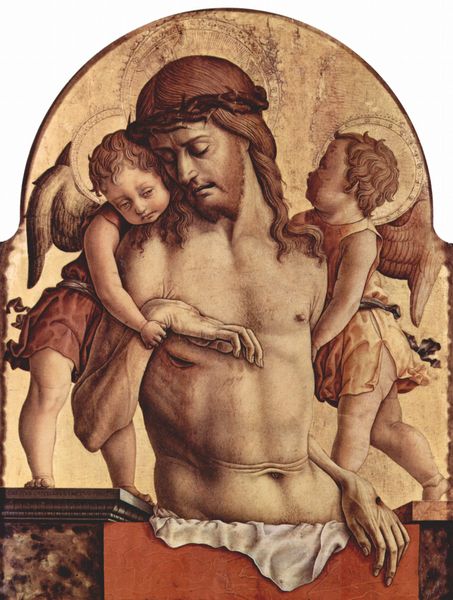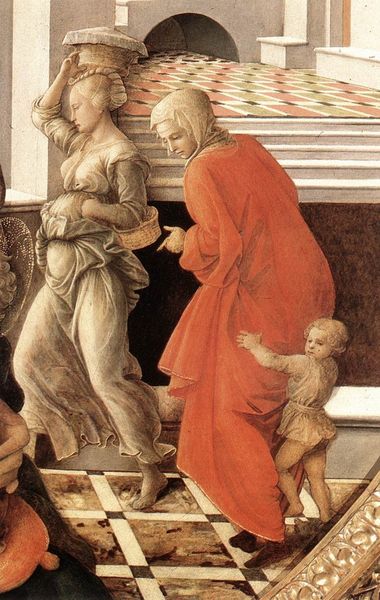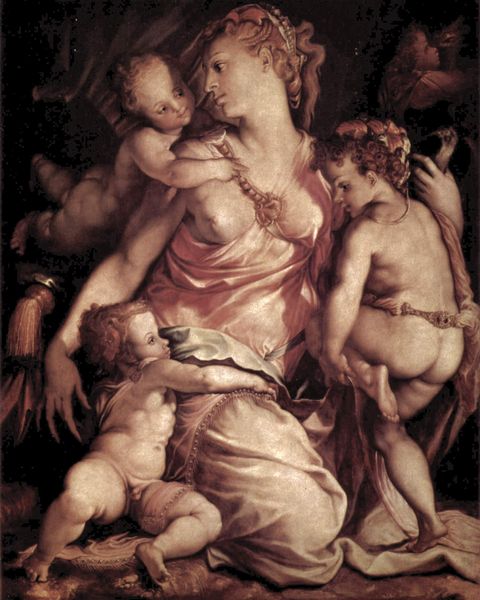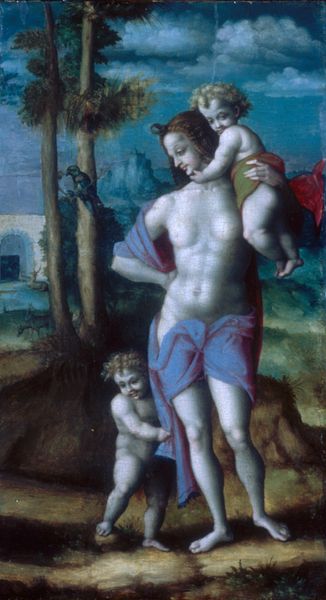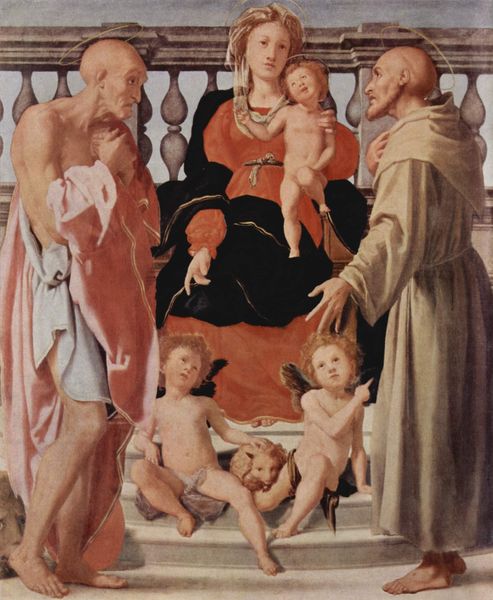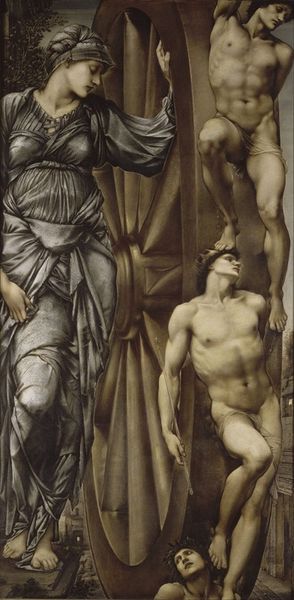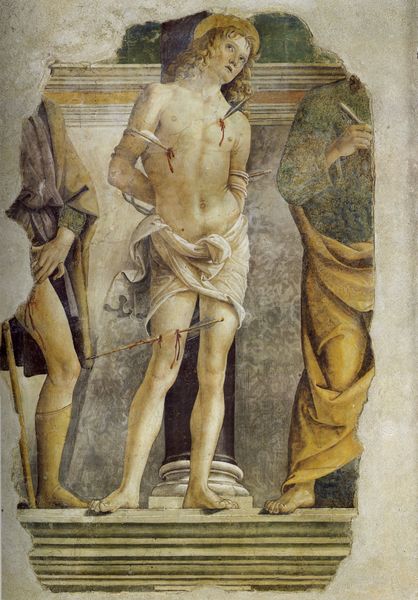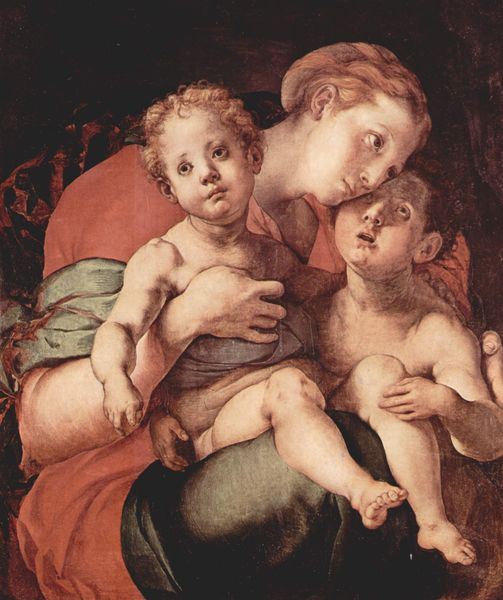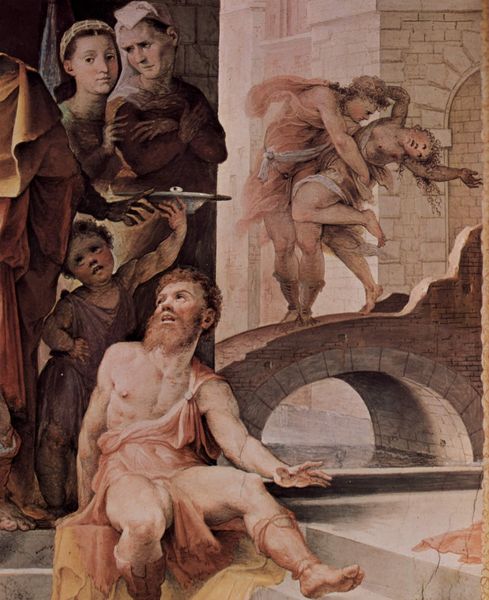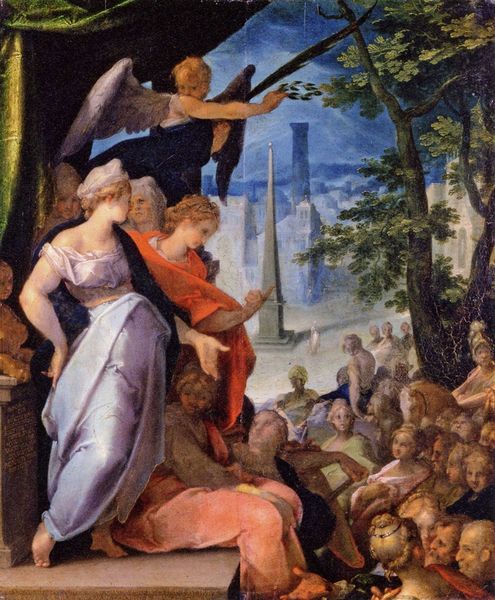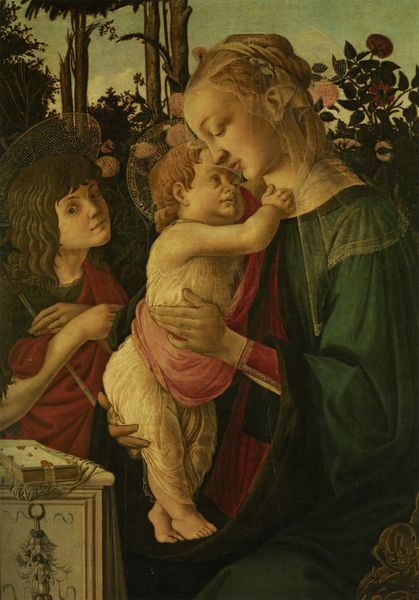
The Virgin and Child with Saint John and Angels (Manchester Madonna) 1497
0:00
0:00
painting, oil-paint
#
portrait
#
high-renaissance
#
painting
#
oil-paint
#
oil painting
#
italian-renaissance
#
portrait art
#
virgin-mary
#
angel
#
christ
Dimensions: 104.5 x 77 cm
Copyright: Public domain
Curator: We are standing before Michelangelo’s "The Virgin and Child with Saint John and Angels," sometimes called the "Manchester Madonna." Completed around 1497, this oil painting offers a compelling window into the artist’s early career and is currently held here at the National Gallery. Editor: Wow, it feels…unfinished, like a beautiful dream still being formed. The figures have a sculptural solidity, but that backdrop feels like wisps of smoke. I love the sense of unfolding potential. Curator: The unfinished nature is central to its discourse. Art historians note Michelangelo’s focus on the figures, especially their complex interrelationships, rendered with anatomical precision indicative of High Renaissance ideals. Consider the implied lines of sight and the subtle tensions. Editor: Those children—they look like they’re already carrying the weight of the world. The Virgin Mary has such a serene but wistful countenance, the Christ child has that same knowing, world-weary look as an adult in miniature. Curator: Semiotically, one can decode the composition through triangulated relationships that govern the characters arranged in dynamic juxtaposition that are typical of Renaissance portraiture, thereby underscoring the harmony and balanced proportions which resonate with philosophical tenets of that period. Editor: It's funny how the lack of finish almost amplifies its emotional impact. It’s less about a perfect scene, and more about capturing raw feeling. What do you think it suggests about the man who started to do it, the unfinished? The struggle, perhaps, to depict the unknowable? Curator: It may point to external influences or the pragmatic demands inherent in commissions, influencing or restricting creative intentions. However, an incomplete state prompts us to assess the foundational skeletal structure to decode what constitutes an artwork. Editor: A skeleton revealing the truth underneath... It has changed the way I look at 'finished' art to think about art this way. It’s like the essence of it all, unburdened by all the extras. Thanks, Michelangelo!
Comments
No comments
Be the first to comment and join the conversation on the ultimate creative platform.
